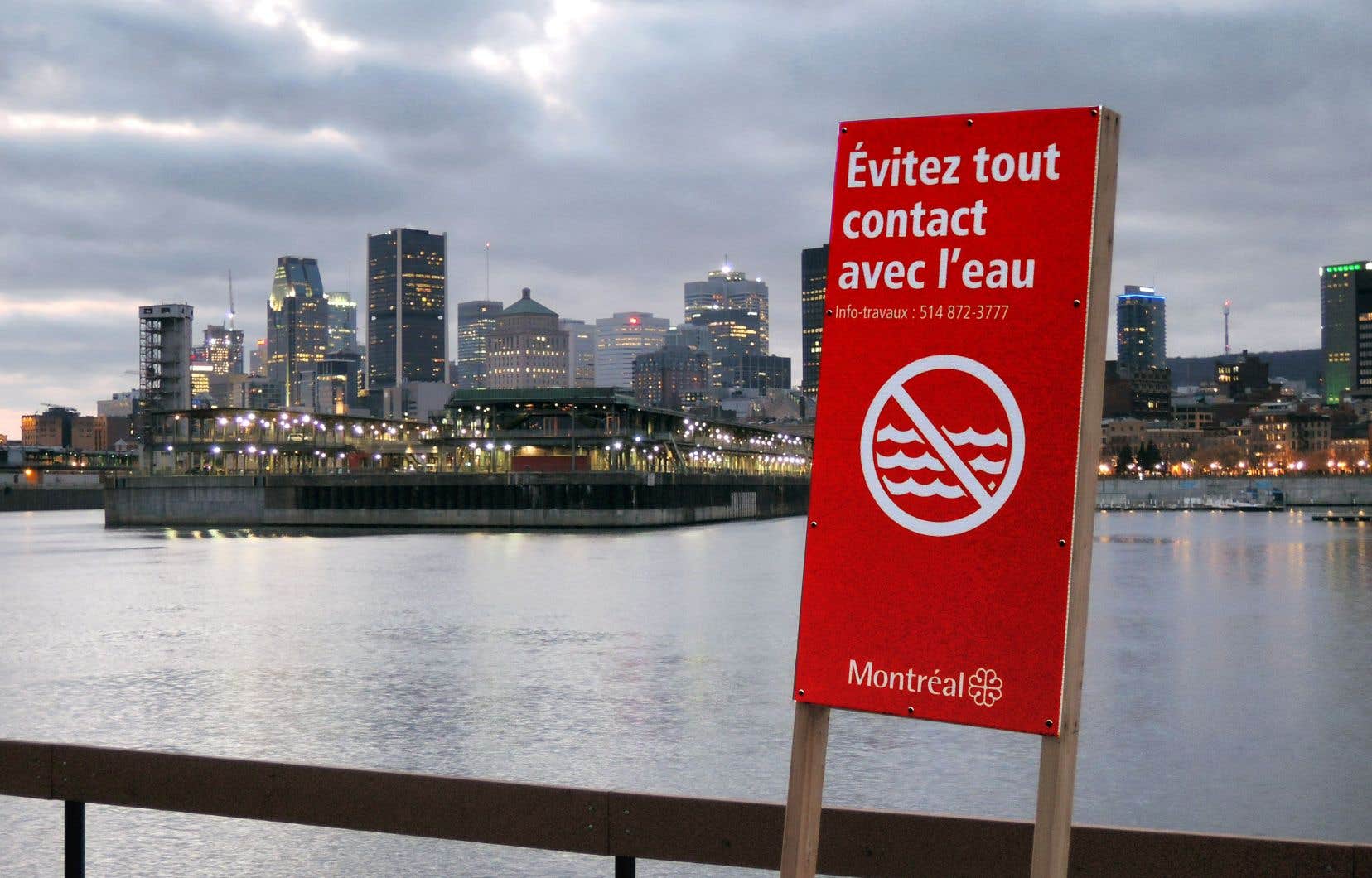Eight years after the “Flushgate”, the controversy surrounding the planned discharge of eight billion liters of wastewater into the St. Lawrence River in 2015, the City of Montreal is still not able to detect all the overflows that occur on its territory, noted the Auditor General, Michèle Galipeau, in her report tabled Monday at the municipal council.
Montreal has two wastewater treatment plants, the Jean-R.-Marcotte station, which treats the majority of wastewater from the island of Montreal, and the much smaller Île Notre-Dame station. During an audit carried out last year for the years from 2019 to 2022, the auditor noted that almost all, or 96%, of the overflow structures were equipped with equipment to identify overflows, and that 79% of them were able to communicate in real time the overflows with the treatment plant.
On the other hand, the auditor noted that when systems failures occurred, it was not possible to determine whether or not there had been an overflow. Thus, between January 2020 and June 2022, the AG noted that 127 events had not been followed up due to overflow recorder failures for periods ranging from one to 30 days.
From January 2019 to July 2022, Montreal recorded 3,891 overflows from overflow structures, the vast majority of which, 3,686, were attributable to rain and snowmelt. Over the years, the number of overflows has decreased, from 1454 events in 2019 to 562 in 2021. For the first six months of 2022, their number reached 643. According to the VG, this result is however linked to less precipitation.
Michèle Galipeau also addresses certain criticisms to the City regarding the reports made to the authorities of the ministries involved. Thus, 98% of the monthly and annual reports were sent to the Ministry of the Environment, the Fight Against Climate Change, Wildlife and Parks within the required timeframe. However, the City fails to notify Environment and Climate Change Canada when an overflow occurs. It is slow to send the two ministries information concerning overflows in dry weather, in emergencies or during planned work.
The City has implemented various measures to reduce overflows, in particular by repairing its underground network and by building retention basins, underlines the VG, which considers that, overall, the City has put in place mechanisms allowing a healthy monitoring management of water discharges.
Heritage buildings
Montreal has little knowledge of the state of heritage buildings on its territory and it has not identified all the buildings of interest that belong to it or are private property, observes the auditor general, Michèle Galipeau. In particular, it noted shortcomings in the inspection process and in the management of vulnerable buildings, which leads to their deterioration.
Since the adoption of the Cultural Heritage Act in March 2021, municipalities are required to carry out inventories of heritage buildings built before 1940 on their territory. Montréal has adopted its Heritage Policy and its Heritage Action Plan 2017-2022, promising to be exemplary with its own buildings.
However, Michèle Galipeau points out flaws in the directories developed by the City, the creation of which dates back some twenty years. Some buildings are found in the Integrated Building Management System (SIGI), but not on other platforms such as interactive maps. And only the borough of Ville-Marie has established fact sheets containing the main characteristics of buildings of interest, such as materials and components.
In addition, the Auditor General indicates that the state of conservation of the buildings is not reliably established. The City has refined the assessment of the condition of its buildings through modelling. This exercise has determined that the investment gap amounts to $501 million for 54 heritage buildings under the Service de la gestion et de la plan buildings (SGPI), but this represents only a fraction of the deficit. investments for the entire territory, notes Michèle Galipeau. As for buildings in the boroughs, some audits carried out date back to 2009 and 2015, she notes.
Added to this is the issue of vacant buildings, the condition of which has seriously deteriorated over the years. The Integrated Building Management System has 82 buildings, nearly half of which are heritage sites, including the former Craig pumping station, the Hélène-de-Champlain pavilion and Fort-Lorette.
Preventive maintenance programs specific to municipal heritage buildings have not been established, laments Michèle Galipeau. Of the 318 municipal buildings audited, only 68% are targeted by maintenance programs. According to good industry practices, an annual budget of 5% of the value of the building stock must be provided for in order to maintain it. However, the Integrated Building Management Service (SGPI) only devotes the equivalent of 2.5% to it. Between 2017 and 2022, the deficit fell from 1.5 billion to 2 billion, underlines the VG.
Michèle Galipeau also considers the means put in place to ensure the protection of heritage buildings belonging to private interests to be insufficient. The administration also announced last week the establishment of new regulations on the maintenance of vacant buildings with much higher fines.
The Auditor General’s report, which runs to nearly 500 pages, also focuses on the city’s budget process, the granting and management of financial contributions to NPOs, the management of the métro’s industrial control systems and management of the Artemis system of the Montreal Fire Department (SIM). A chapter is also devoted to the effectiveness of patrol vehicles on the Service de police de la Ville de Montréal (SPVM), but given the security issues, the report does not provide details on the observations made by the VG.
This is the last annual report of Michèle Galipeau, who ends her mandate this year as Auditor General of the City of Montreal.
Further details will follow.
